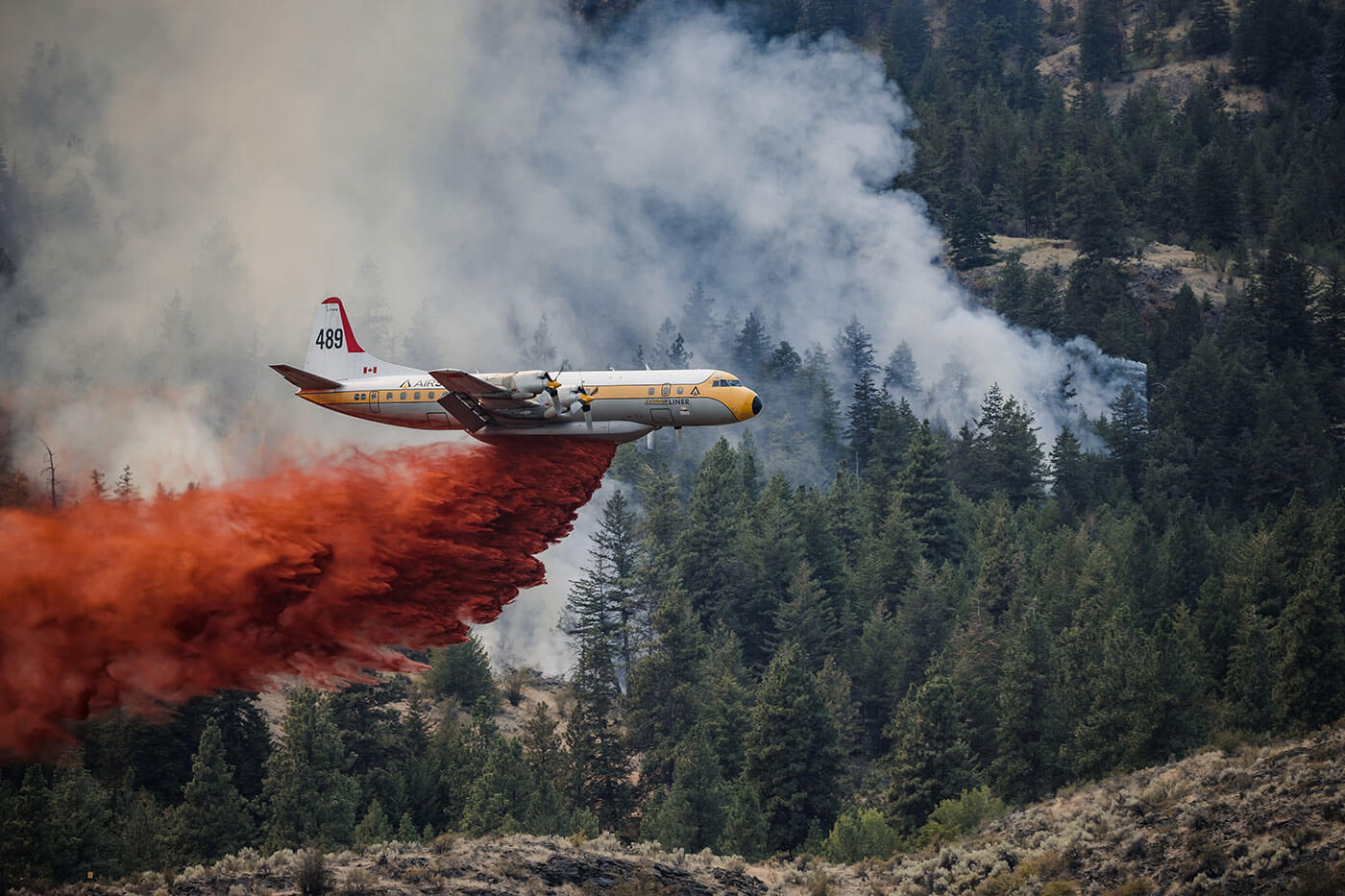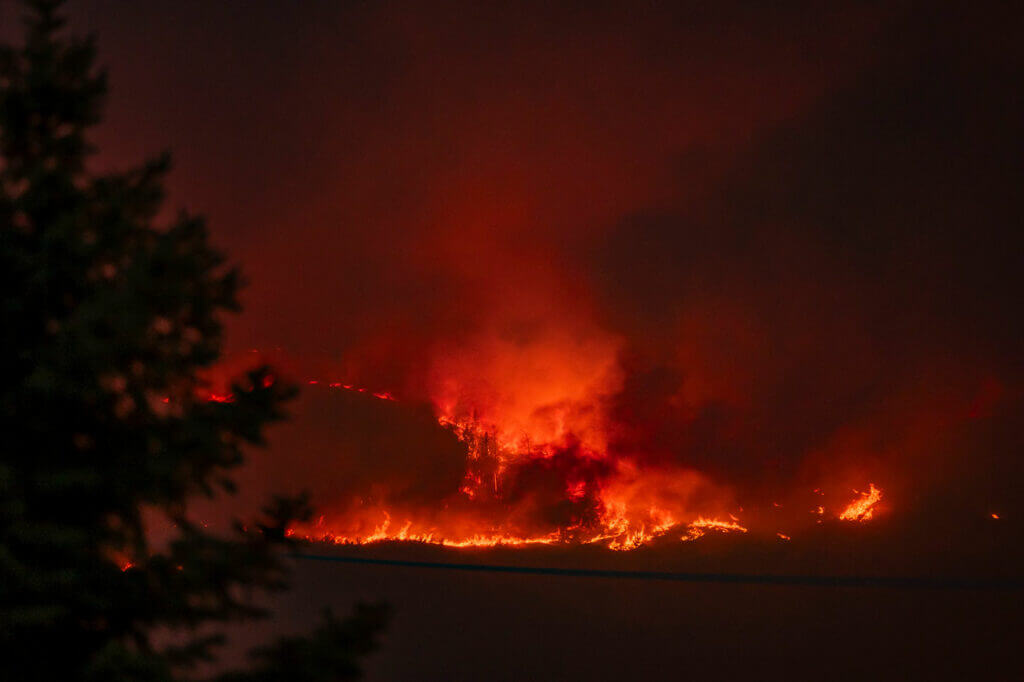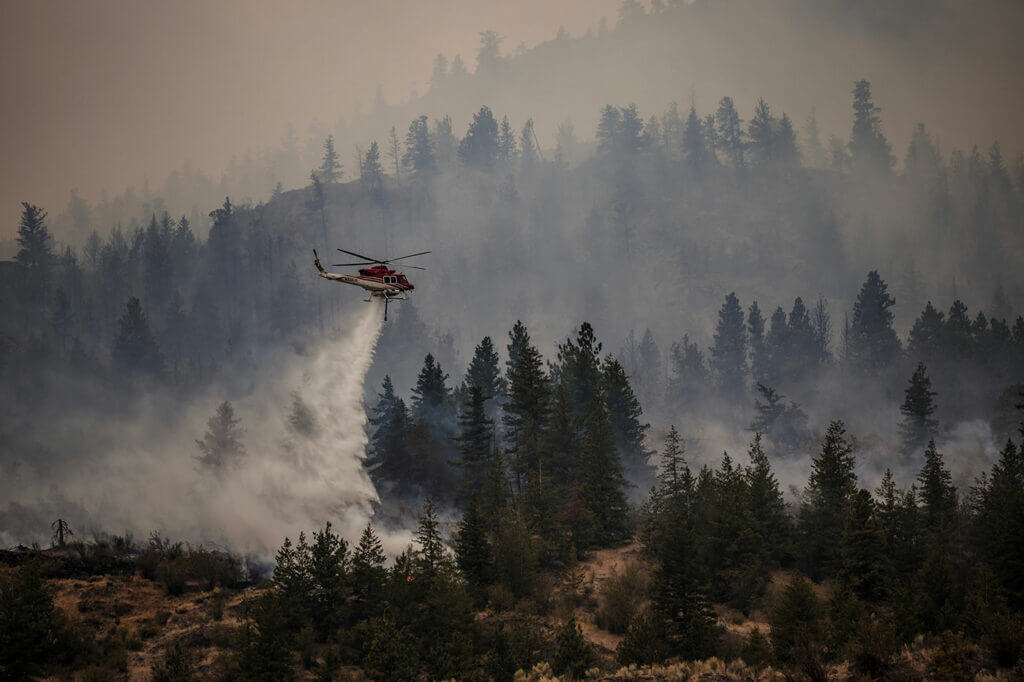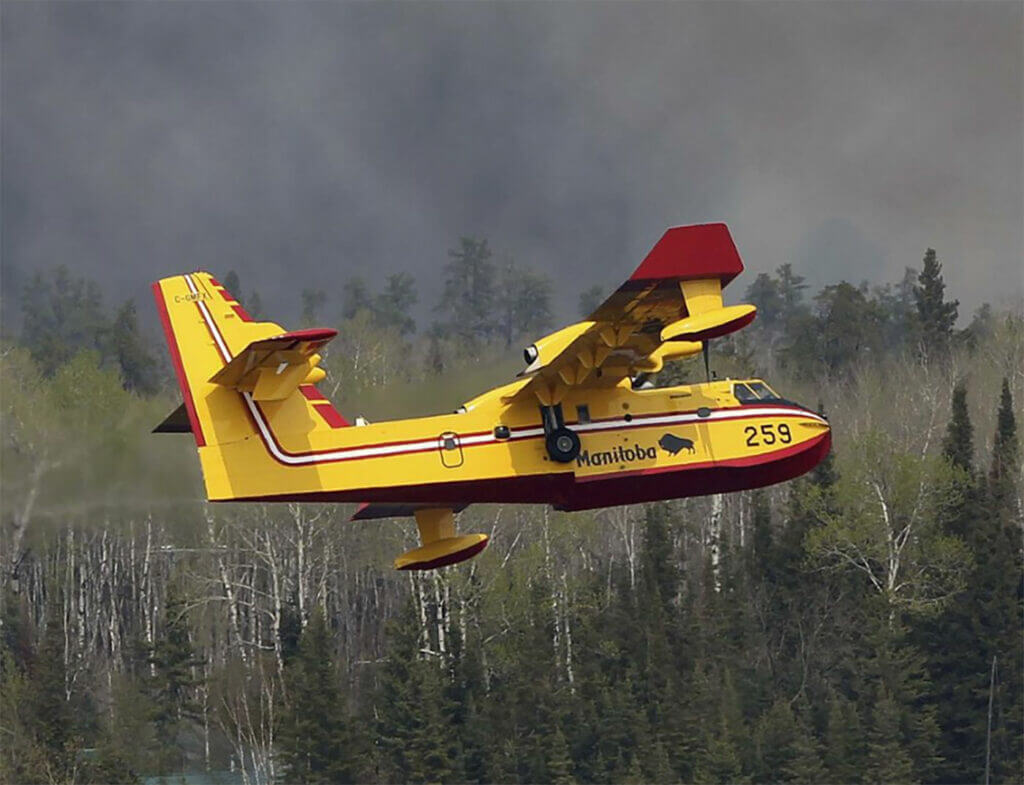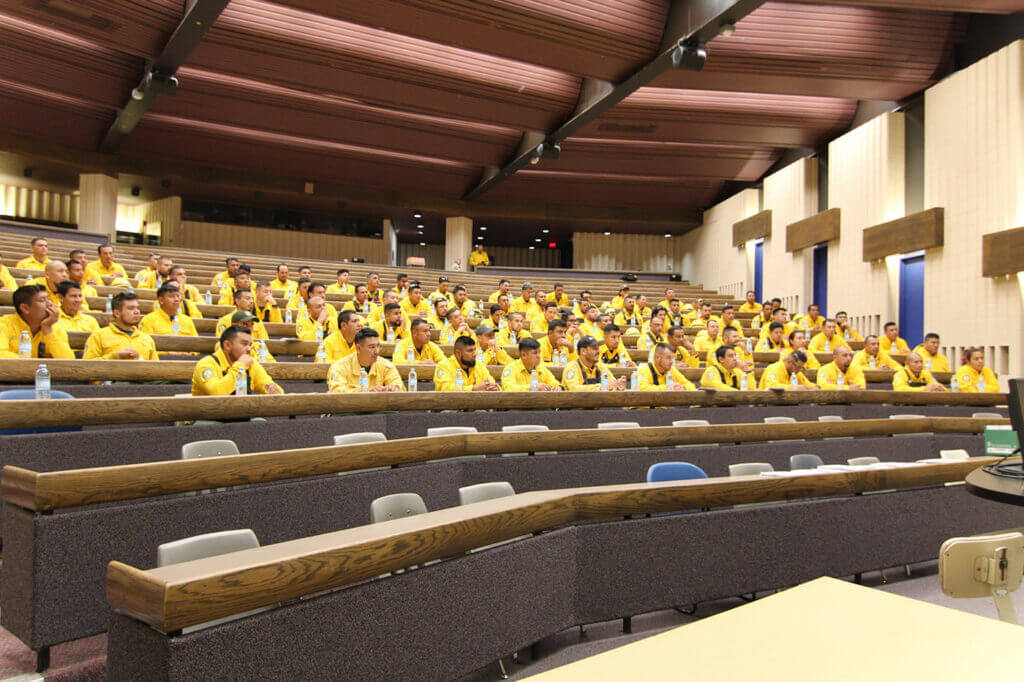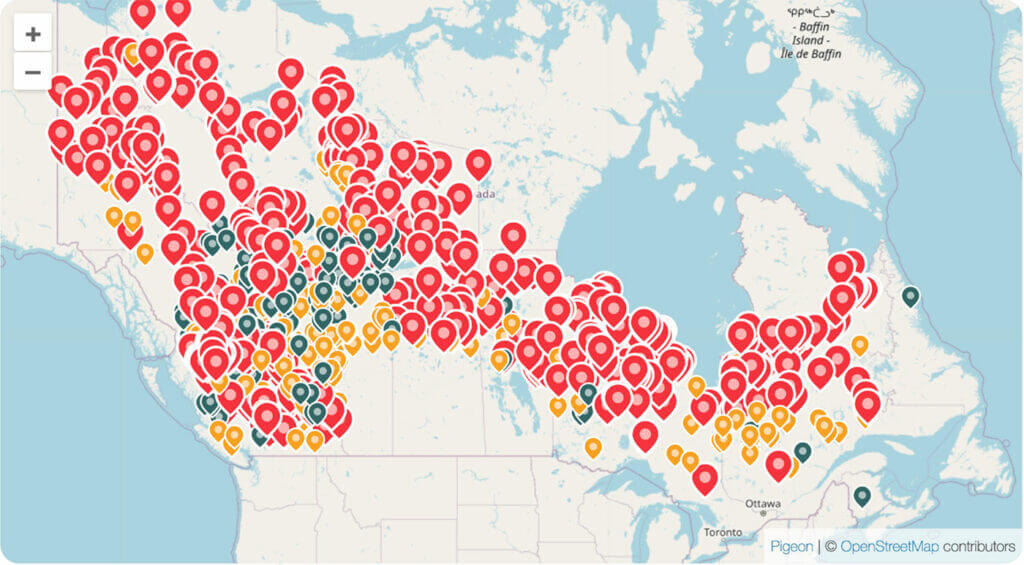Estimated reading time 21 minutes, 39 seconds.
Everyone knows that Canadian forests are burning. Whether they’ve seen it in the news or smelled it in the air, the fallout from the 2023 wildfire season is significant and scary.
On June 28, Toronto’s air quality was among the worst in the world, thanks to forest fires burning in Quebec and northeastern Ontario. Just a day later, more than one million Americans were under air-quality alerts as wildfire smoke drifted south of the border, causing hazy skies in big U.S. cities like New York City, Chicago, and Philadelphia. NASA reported that smoke from weeks-long fires in Quebec had reached southwestern Europe by June 26.
Compared to a relatively slow fire season in 2022, this year started with a bang in Western Canada. Crews were called out about two weeks earlier than normal in mid-April, foiling the usual staggered start that allows aerial firefighters and ground crews to ramp up at a measured pace.

At Air Spray in Springbrook, Alberta, vice president and COO Paul Lane reported that aerial firefighting contracts are typically starting earlier and finishing later than in seasons past.
“This year, the agencies wanted all our aircraft in mid-April,” he said. “We had to send aircraft out with maintenance crews, and there weren’t enough crews to stay home and continue getting the other aircraft ready to go. It was all hands on deck and we had the DOMs (directors of maintenance) working in the hangar.”
With roots going back to 1954, Air Spray employs some 200 people in Canada and at its base in Chico, California. Using a fleet of Twin Commander 690 and Commander 1000 bird dog aircraft; L-188 Electra, BAE 146-200, and AT 802 land-based airtankers; and CL-215, CL-415, and AT-802 Fire Boss amphibious tankers, Air Spray flies for fire agencies in Alberta, British Columbia, Manitoba, and Yukon. As usual by this time of year, Lane said the company’s aircraft are fully booked. So far, there hasn’t been a lot of unplanned aircraft movement.
“Our Manitoba machines came over to Alberta and worked for a few days, but primarily we’re working our existing contracts,” he said.
The early start to the season made it more difficult because crews had to ramp up seemingly overnight. But Lane said Air Spray’s in-house simulator training makes that easier to do.

“We’ve streamlined certain aspects and courses that pilots can do online,” he said. “Covid taught everyone how to use online training. When they come to the hangar, it’s for more intense training in the aircraft and sim, and we can stagger that training.”
Air Spray is actively working on recruitment strategies to bring down the average age of its pilot group. However, Lane admitted there are some staffing-related challenges in this tight market.
“One of the troubling things about it is that the agencies want everyone to have fire experience all the time,” he said. “You can’t get that — you have to train them. It’s better to train them as first officers as opposed to hiring from other countries.”
Air Spray is working with provincial and territorial fire agencies to develop a more robust training system for bird dog pilots, who fly ahead of airtankers to coordinate aerial firefighting efforts that support ground-based firefighters.
“The U.S. has a good system; we’d like to replicate that,” said Lane. “Here at Air Spray, we bring on an air attack officer from B.C. to work with all our new bird dog pilots to get them up to speed on what it’s like to be over a fire.”
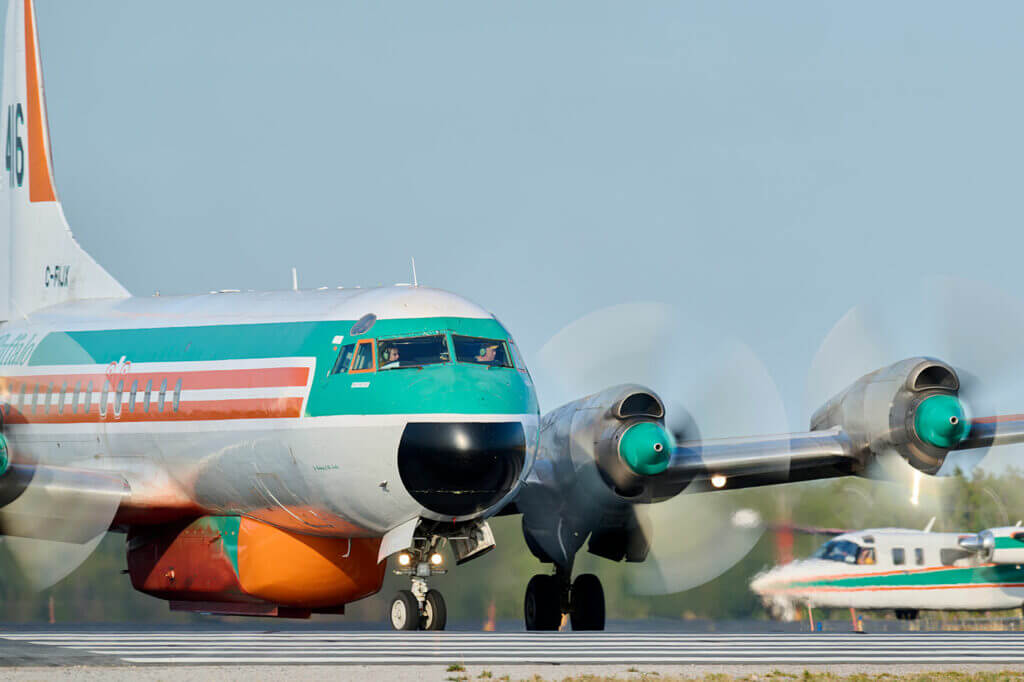
While Air Spray is actively recruiting pilots, it has a more pressing need for aircraft maintenance staff. Thanks to retirements and a shortage of people who want to go out in the field, the company is currently recruiting maintenance personnel from overseas.
“The nature of the industry is we need vastly more people to be mechanics,” said Lane. “When we advertise, we advertise globally. We are looking at a number of international candidates but they must go through the immigration process. Locally, we have a strong apprenticeship program and close links with SAIT and Red River College, and that is our preferred route.”
With fire seasons stretching longer than ever before, Lane said Air Spray is compensating by moving its training earlier in the year.
“What used to happen on April 1 happens on March 1 instead,” he commented. “We’re trying to get more assets ready earlier. It’s not just that fires are earlier, either. They’re also getting more intense and bigger, encouraged by multi-year droughts. Then, you have humans expanding into the WUI (wildland urban interface), so we’re creating a bit of a problem for ourselves.
“Rural communities and assets like pipelines, cell towers, railways, and power lines must be protected. But the boreal forest needs to burn to renew itself, and if it weren’t impacting man-made assets, they’d probably just let it burn.”
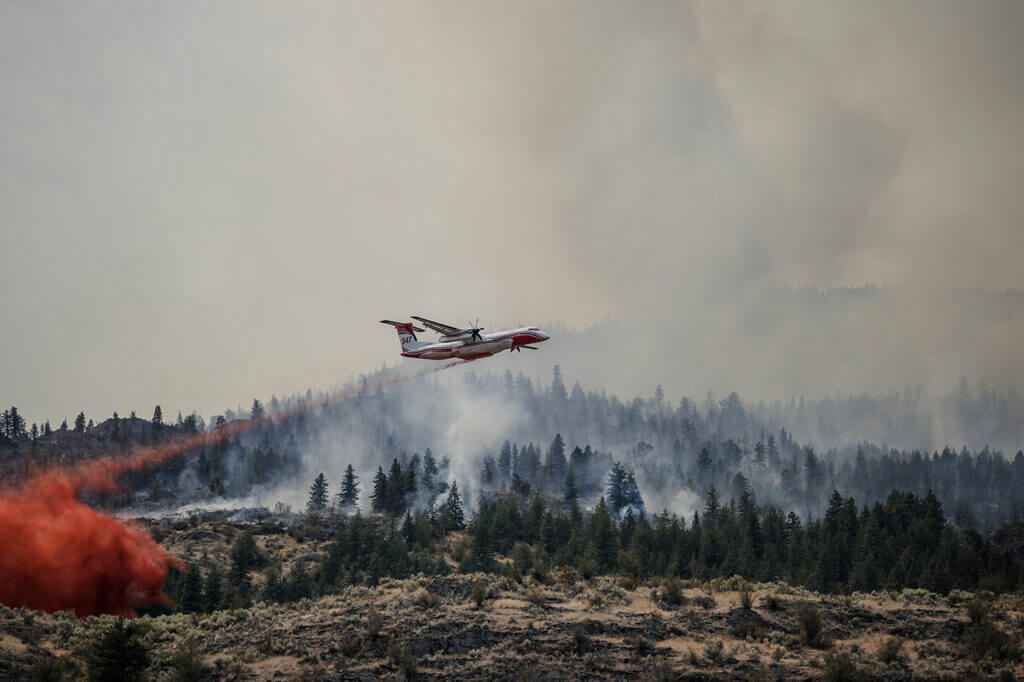
When reached for comment on June 21, Jeff Berry at Conair Group Inc. said the Abbotsford, British Columbia-based company was enjoying a brief pause in firefighting activity. It was the first break since the majority of its 70-plus aircraft were called out in the last week of April.
Conair operates in Western Canada, Alaska, and the lower 48 U.S. states. Over the years, it has also fought fires for fire control agencies in Australia and France. It operates two kinds of bird dog aircraft (Cessna 208B Grand Caravan and Turbo Commander TC-690A), plus Avro RJ85, Dash 8-400, and Air Tractor AT-802 land-based airtankers, and CL-415 and AT-802 amphibious airtankers. Conair has been involved in aerial firefighting for more than five decades, and Berry reported that the company has coped well with the incredibly busy 2023 fire season.
“We are built to sustain a high level of operational tempo and are prepared to do that for the entire season,” he said.
One of its most valuable assets when it comes to preparing crews for the fire season is Conair’s internal Mission Training System (MTS). The system was designed by Conair, with software and cockpit simulators provided by Presagis and Flightdeck Solutions, respectively. This is the first year where six flight training devices (FTDs) have been linked together to simulate different firefighting scenarios.
“We have an FTD for every aircraft in our fleet,” said Berry. “This year, for the first time, we were able to run multiple scenarios with multiple aircraft working on fires across Western Canada. These prepare the pilots to hit the ground running because these days, fire seasons go from zero to 60 very quickly.”

The MTS is invaluable for training pilots to deal with aggressive fires where communities and other assets are being threatened.
“Now, we’re able to send a skilled pilot out with exposure to multiple aircraft responses, aggressive fire behavior, and poor visibility. It’s about teaching them to fight fire, which is hard to do in a non-simulated environment. Pilots are feeling very well prepared for what they are seeing, so they can fly safely throughout the entire season.”
Berry said it’s getting hard to find pilots with experience on type. Again, that’s where the MTS is handy for facilitating hands-on training in a safe environment.
“Staffing is always a challenge, but it’s particularly acute on the AME side for specialties like avionics,” noted Berry. “We’re on the lookout all the time. We’re happy with the recruitment we did on the pilot side this year, but we’re not seeing the same number of applications as in years past. The lifestyle is nomadic, moving around the forest and working a lot in a period of time, and it’s not for everyone.”
Berry, who has been involved with aerial firefighting for 46 years, said the hectic fire season in Canada is holding the world’s attention.

“We’re seeing an awful lot of demand around the world,” he said. “Canada is looked at as a world leader in aerial firefighting. Others are watching us closely to see how we respond [to this season]. They’re all wondering what will happen in their home countries next year.”
And, although Conair was enjoying a bit of a lull in late June, Berry expected to see “a rapid return to aggressive fire behavior” in the near future.
Further east, the Ontario Ministry of Natural Resources and Forestry (MNRF) saw a slower start to the 2023 fire season. Fire information officer Isabelle Chenard said that throughout May, statistics for fire activity were still well below the seasonal 10-year average. However, a significant number of fires were confirmed throughout June and into July.
“As of July 3, we had 346 fires across the province (year to date), compared to 107 last year at the same time and 275 for the 10-year average,” she said. “Last season was a very quiet fire season for Ontario. The difference in the statistics is quite apparent for this time of year. When you’re looking at the numbers, it’s easy to see that each fire season is highly variable. It can change very quickly.”
The Ontario MNRF flies a mixed fleet of firefighting aircraft, including nine CL-415 waterbombers; six DHC-6 Twin Otters (four waterbombers with the capacity to carry 1,200 liters of water in their floats and two that are used for transport); five DHC-2T Turbo Beavers; six Airbus EC-130 B4 helicopters; and one Airbus AS350 B2.
In addition, the MNRF has more than 45 medium and intermediate helicopters on contract for this fire season. Finally, Ontario has also contracted five heavy helicopters currently working mostly in the northwestern section of the province: a Sikorsky S-61N, a UH-60 Black Hawk, two AS332 Super Pumas, and one Kaman K-MAX.
Imported aerial assets working in Ontario at the time of writing included three AT-802 Fire Boss aircraft from Minnesota, there as part of the Great Lakes Forest Fire Compact, a resource-sharing agreement between Ontario, Manitoba, Minnesota, Michigan, and Wisconsin. Chenard also mentioned that 103 Mexican firefighters were undergoing training in Thunder Bay, Ontario, as of June 20, preparing to assist with fire control efforts.
“We are now experiencing a drying trend, with temperatures up to 35 C (95 F) across the far north,” she added. “That’s significant in terms of fire activity potential.”
Looking ahead, Chenard said Ontario continues to monitor the landscape for lightning storms while educating residents on how to prevent man-made starts.
Balancing act
Moving into July, the Canadian Interagency Forest Fire Centre (CIFFC) reported 618 active fires across the country on July 3, with year-to-date blazes responsible for burning a total of 8.5 million hectares. Those numbers jumped to 1,034 active fires and 13 million hectares burned as of Aug. 1.

At VIH Helicopters in Victoria, British Columbia, the main focus has always been on heli-logging and construction, but director of operations Shane Palmer said the company is on standby to fight forest fires. With its fleet of four Kamov KA-32s and six Sikorsky S-61 heavy helicopters, as well as Bell 212, Bell 407, and Bell 206 JetRanger III models, VIH’s helicopter division is fully booked for 2023 and into 2024. Usually, each machine flies between 200 and 250 hours per month and the company’s 30 pilots are busy year-round. (At the moment, VIH’s four Kamovs have been sidelined due to sanctions relating to the Russia/Ukraine war.)
“We don’t count on fires,” explained Palmer. “When fires happen, we’re happy to help out, protecting human life and wildlife in a busy season. But we have our year planned out, and it’s often a balancing act between heli-logging jobs and fires.”
By the third week in June, VIH had deployed all six of its heavy S-61s, a 212, a 407, and three JetRangers to fight fires. The company had participated in efforts to quell the Donnie Creek Fire, the largest wildfire B.C. has ever seen — covering an area larger than the province of Prince Edward Island. VIH had also deployed two S-61s to fires in Alberta and one to Quebec.
With fire crews on high alert, VIH has been deploying its heavy helicopters to logging sites with a portable firefighting bucket on board.
“That way, we have everything we need to reposition quickly. Even if we have a local fire during logging, we want to be ready.”
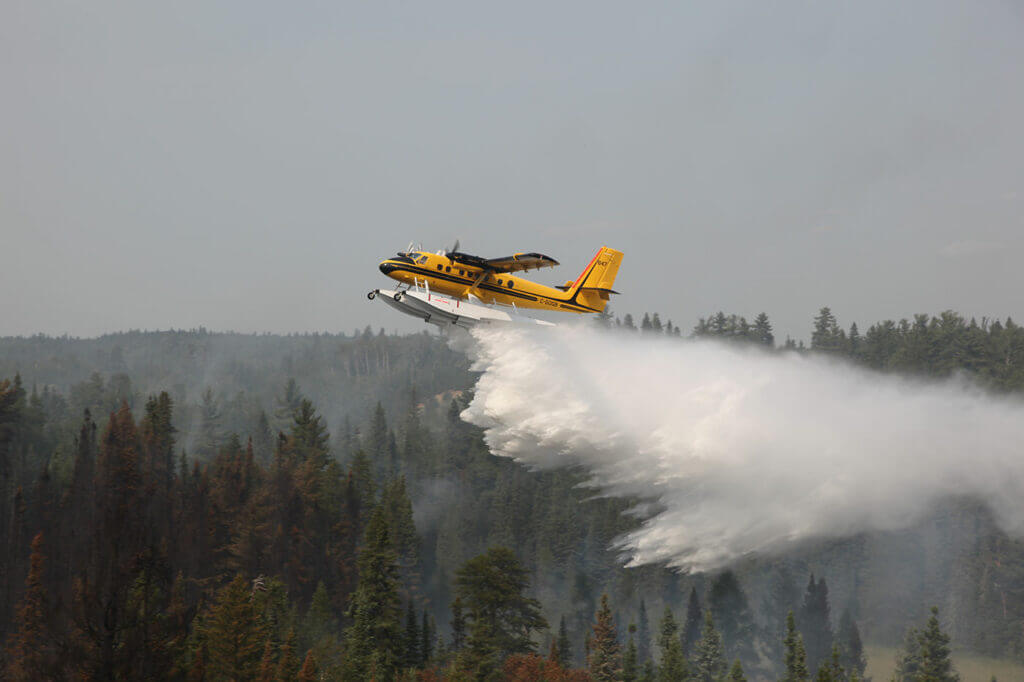
While late June weather conditions allowed a brief reprieve from the frenetic pace that characterized the early weeks of the fire season, Palmer fully expects it to pick up again.
“Mother Nature decides everything, but we’re at attention,” he said. “Personally, I haven’t seen a trend with each fire season getting worse. I’ve seen that it’s cyclical — this year we’ve been busy, but last year only three machines were used sporadically.”
Peter Murray, president of Talon Helicopters in Richmond, British Columbia, said the main difference with this fire season compared to years past is that more than two provinces have needed help at the same time.
“Once that happens, there aren’t enough resources from Canada or our mutual aid agreements with the U.S. to handle it,” he commented. “Canada is full of forests and when things get dry, they become firewood.”
Talon Helicopters is capable of providing firefighting services across Canada, travelling as far as Quebec in the past. However, similar to VIH, Murray said those missions need to be balanced with year-round base work, including search-and-rescue, film, utility, and transport missions.

“Maybe up to 30 percent of our activity each year is associated with fires,” he said. “We’re a base operation out of Vancouver, so we keep helicopters here to service our regular customers.”
Still, Talon offers a unique capability as the owner of the only Transport Canada-approved NVG night fire attack medium helicopter. Alberta Wildfire spokesperson Josée St-Onge said the organization successfully tested the use of night vision goggles (NVGs) with Talon Helicopters during the 2022 wildfire season.
“Night vision goggles amplify light up to 60,000 times,” explained St-Onge. “It allows pilots to work overnight and conduct activities like bucketing operations. Humidity is typically higher at night and wildfires are less active, so suppression efforts are more likely to be successful.”
Based on the testing results, Alberta Wildfire has entered into a five-year trial that will better assess the potential of night firefighting technology.
One common goal
While many of the assets fighting Canadian fires are based within the country, some aircraft are here thanks to reciprocal agreements that provide for cross-border assistance when needed.
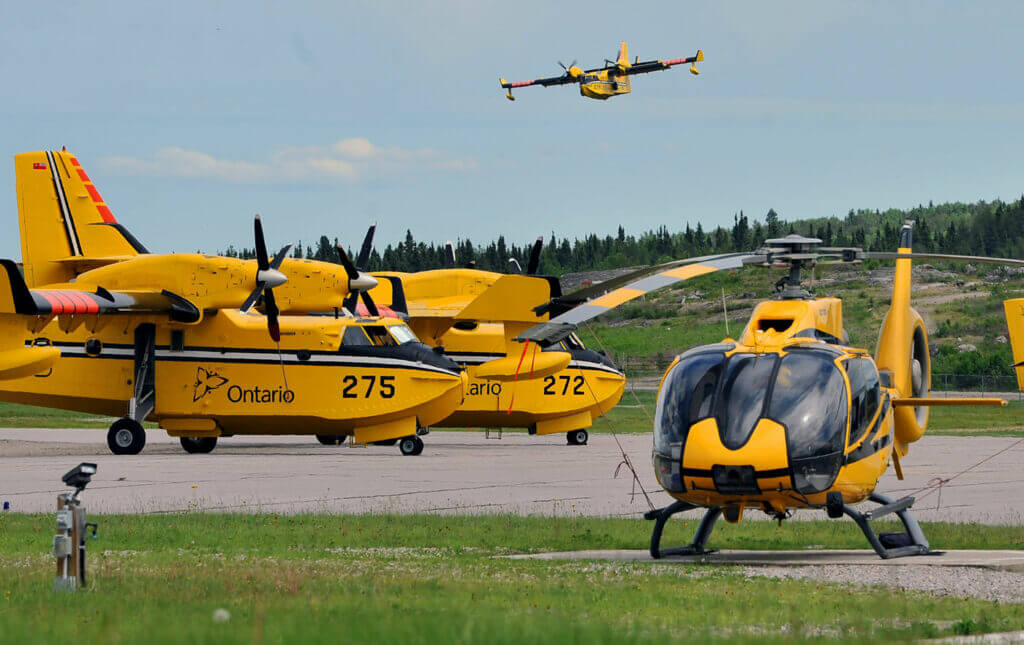
One such company is Oregon-headquartered Columbia Helicopters, which had one Columbia Model 234UT Chinook heavy helicopter operating in Alberta at the end of June. The aircraft deployed from Sacramento, California, and is positioned at the heavy helicopter base in the northern Alberta community of High Level.
“With the bulk of our fleet operating on international projects, N239CH is the only Standard Category Model 234 available to support fires in Canada,” said Columbia spokesperson Kayla Foulk. “Fortunately, the wildfire activity in the U.S. has been lower than predicted, which enables us to push our assets up north.”
Columbia also operates restricted category ex-military CH-47D Chinooks within the U.S.
Its Alberta-based Chinook is now working multiple smaller fires that cover one large region, with mission locations changing daily. It is flying alongside four other heavy helicopters and several medium and light machines.
Regardless of where they are based or what they are flying, crews working to protect people, homes, and other assets from the ravages of wildfire are committed to the job. In this busy fire season, it’s all hands on deck and operators are responding in kind.
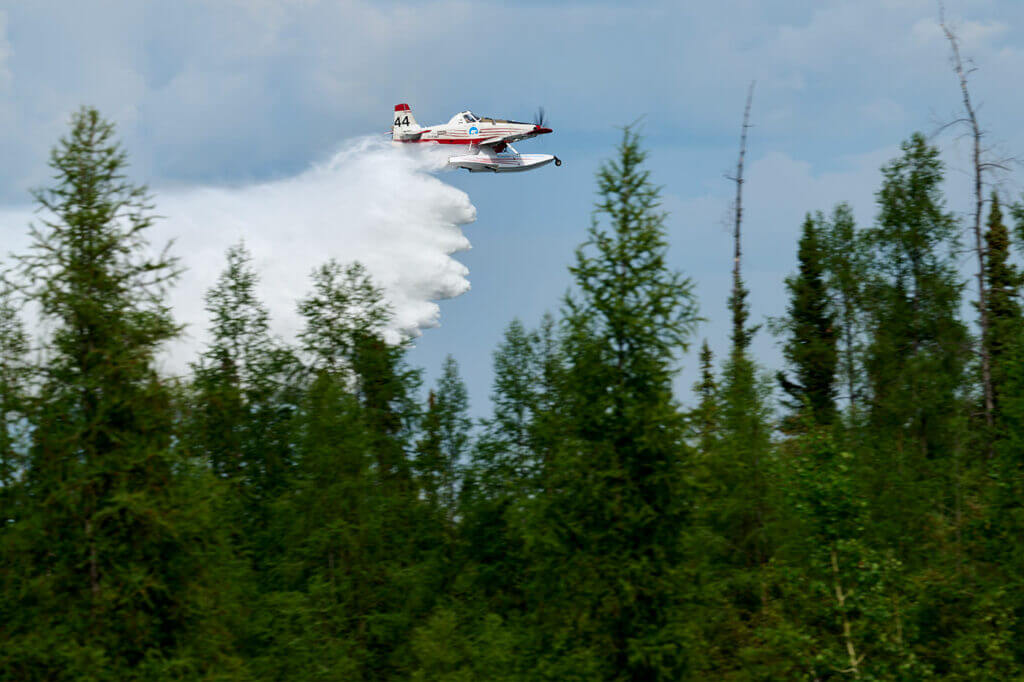
“It’s very important work,” concluded VIH Helicopters’ Palmer. “Everyone is very proud to be part of the efforts to protect human life, wildlife, and infrastructure. Sometimes, you’re doing your best and you can’t do anything about losses. It’s lump-in-your-throat kind of stuff. Our crews are invested in this.”
